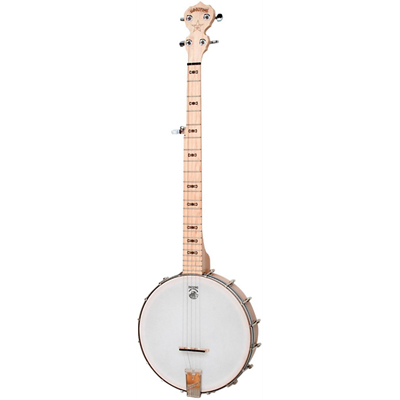Great news everyone! A little while ago my cousin called to tell me her son wants to learn to play the guitar. Being a loving uncle, I have decided to come up with a list of the best kids’ guitars. Now that I have it, I decided it was a good idea to share it for the benefit of all the little rockstars around the world. These guitars accommodate the needs of children perfectly: the small size allows the little munchkins comfortable reach and easy learning. Your kids will look just like the stars they aspire to be someday so that the pictures you take will embarrass them into deep adulthood.
There are many details to consider when buying a guitar for your young one. Age and height are very important. You also have to know whether the child wants to start out with an electric guitar or an acoustic one. It is also important to consider how often your child will be using the instrument. Do you intend to take him to a professional tutor? Do you want to teach him yourself? Or is this just one of the many toys he is to have? I’ll take a more in-depth look into these subjects in the third part of the article. Before that though, here is a list of the best guitars for kids, acoustic or electric.tar.
Top 10 Best Guitars for Kids
| Image | Guitar Model | ||
|---|---|---|---|
 | Martin LX1 Little Martin |  (4.9 / 5) (4.9 / 5) | Check on Amazon |
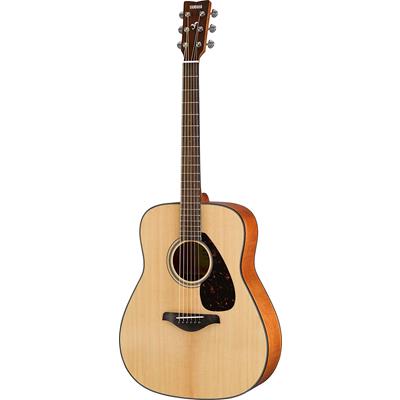 | Yamaha FG800 Solid Top |  (4.8 / 5) (4.8 / 5) | Check on Amazon |
 | Cordoba Guitars Protege C1 ¾ Size Acoustic Nylon String |  (4.7 / 5) (4.7 / 5) | Check on Amazon |
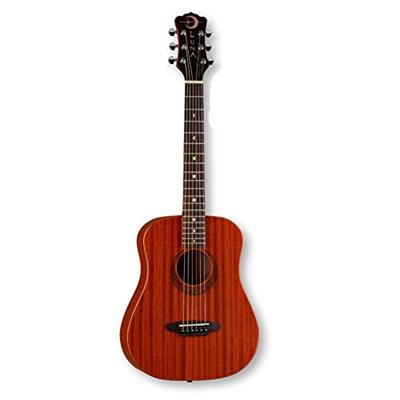 | Luna Safari Series Muse Mahogany 3/4-Size Travel |  (4.6 / 5) (4.6 / 5) | Check on Amazon |
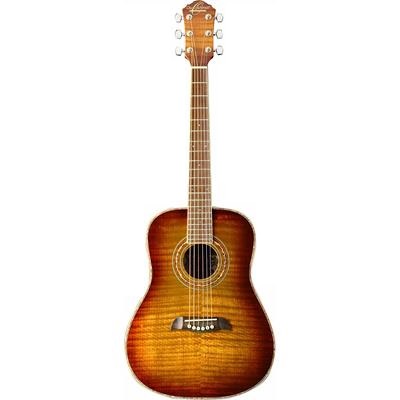 | Oscar Schmidt OG1FYS 3/4 Size Dreadnought |  (4.6 / 5) (4.6 / 5) | Check on Amazon |
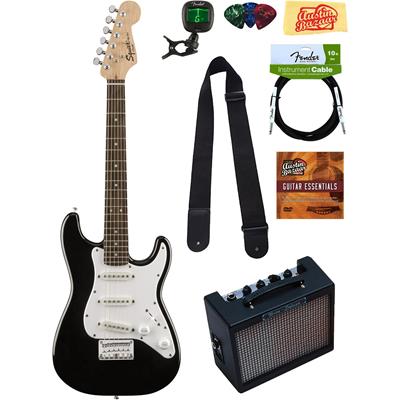 | Squier by Fender Mini Strat Electric Guitar Bundle |  (4.7 / 5) (4.7 / 5) | Check on Amazon |
 | Stagg S300 3/4-Size Standard S |  (4.7 / 5) (4.7 / 5) | Check on Amazon |
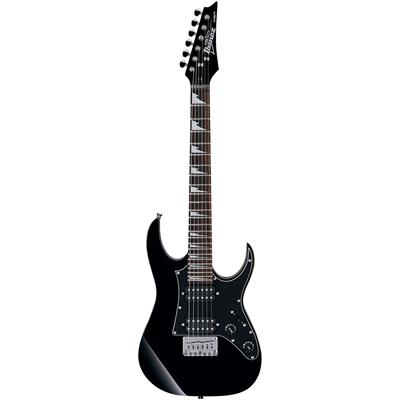 | Ibanez GRGM21BKN 3/4 Size |  (4.6 / 5) (4.6 / 5) | Check on Amazon |
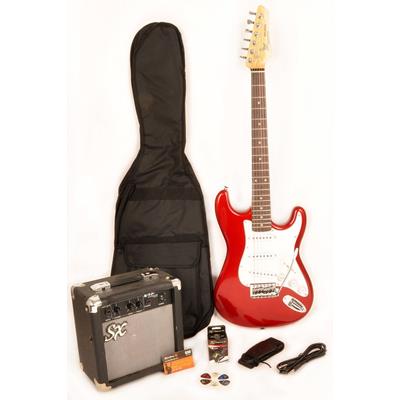 | SX RST 3/4 CAR Short Scale Red Electric Guitar Package |  (4.5 / 5) (4.5 / 5) | Check on Amazon |
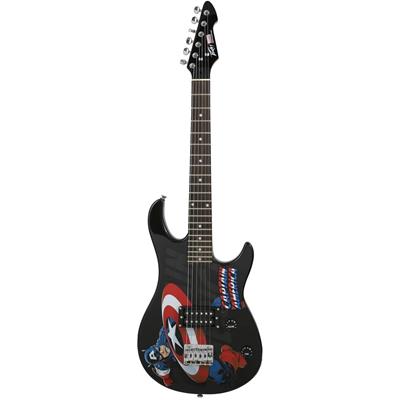 | Peavey Captain America 3/4 Rockmaster Electric Guitar |  (4.4 / 5) (4.4 / 5) | Check on Amazon |
Best Acoustic Guitars for Kids
Martin LX1 Little Martin

The little martin is small in everything other than the way it sounds. Capable of competing with any normal-sized acoustic guitar, this new friend is perfect for kids who take their music seriously. The perfect starter for any kid who will be learning to play classical, country, jazz or rock’n’roll tunes. The Little Martin doesn’t have a problem being used at talent shows, looking and sounding just as good on stage as at home. It will be a pleasure to listen to the sounds of the young one as he gets better week by the week. The only way your kid will ever outgrow this guitar is by getting bigger, and even then, the quality will allow him or her to give it to his kid many years later.
Pros:
- Great Sound
- Lightweight
- Comfortable to play
Cons:
- Limited Colouring options
Yamaha FG800

The Yamaha FG800 Solid top is a solid entry into the world of guitars, both in the sense of how good a guitar it is and as a stepping stone to future stardom. Despite the fact that it might seem a little large for young children, the guitar is easily accessible and simple to play. It is perfect both as the first guitar your child will own as a munchkin or as a teenager. The many color versions available on the market will keep the guitar personalized to the child’s wants, while the bundles it is offered as part of will prove to be affordable to the parents.
Pros:
- Comfortable
- Great sound
- Affordable
Cons:
- Some of the materials uses are not “top notch”
- Might need to restring
Cordoba Guitars Protege C1 ¾ Size

Is your child looking for a more traditional sound and look in his guitar? This Cordoba Guitars Protege C1 3/4 size acoustic nylon-string guitar is perfect for the young guitarist. Offering a very classical Spanish look, this scaled-down guitar is the perfect size for children. The nylon strings are easy to handle and sound beautiful on this affordable, but very well-constructed acoustic guitar. It is a great option for a child to learn to play the guitar. The guitar takes wear well, while the comfortable size and the nylon strings do not create any wear on the child itself. Your offspring will not want to drop his guitar and will at some point end up dancing around the house with it, playing music, desperado style.
Pros:
- Full sound
- Compact
- Affordable
Cons:
- It has great volume but not as high as on full sized models
- The gig bag it comes with is not fully protective
Luna Safari Series Muse Mahogany 3/4-Size Travel

It might have been intended as a travel guitar, but the Luna Safari Series Muse Mahogany ¾ size offers everything a child needs to learn to play the guitar. The small size makes it comfortable to hold for children, while the resistance to wear and affordable price makes it perfect for the hands of active kids. The Mahogany body of this tiny guitar is solid and beautifully shaped. The Nordic decal on the guitar gives it the mystical charm that your child is bound to enjoy. Overall, the value you get out of the guitar for the price it is sold at is incredible. This guitar is perfect for any child to learn to play on.
Pros:
- Compact
- Comfortable
- Affordable
Cons:
- Volume is not that great
- Needs a change of strings
Oscar Schmidt OG1FYS 3/4 Size

A lot of beautiful things come in small packages. The Oscar Schmidt OG1FYS ¾ size dreadnought-shaped guitar is an example of this. Beautifully built and designed, the guitar offers a mature sound to be played from the hands of your child’s hands. It has comfortable and easy access to the fretboards, allowing the child to easily learn the chords he will be playing for the rest of his life. The metal strings and the full resonance of the guitar offer a great sound for the price what could be a toy guitar. There are few guitars in the world as affordable and child friendly as this one. Even if your child was not entirely serious about playing the guitar at first, he will love this guitar enough to unwittingly become just like any other musician – constantly strumming tunes and songs.
Pros:
- Beginner Friendly
- Child Friendly
- Great Sound for Price
Cons:
- Tuning Stability
- Easy to dent
Best Electric Guitars for Kids
Squier by Fender Mini Strat

If your child is more of a punk rock star than he lets on, this Squier Fender Mini Strat Electric Guitar Bundle will be perfect for him or her. The guitar bundle includes a guitar strap, three picks and a guitar essentials guide so you and your child can learn the basics together. The most important of all, the guitar itself, is a great learning tool. Three single-coil pickups allow for a beautiful sound, while the maple c-neck allows easy access to the little hands and fingers of the child. The affordable price of the bundle make it a great option for any child looking to begin their musical future immediately.
Pros:
- Part of a Bundle
- Very Affordable
- Perfect for Kids
Cons:
- Easy to outgrow
- Very basic sound
- Might need an upgrade to electronics
Stagg S300 3/4-Size Standard S

Any tiny rock star is bound to fall in love with the Stagg S300. Styled specifically to the likes and needs of children, the guitar offers color options that cater to the needs of any child. The small size and the C shape neck design allow the child easy access to the fretboard and any sound they wish to learn or want to make. The guitar is made of solid alder and rosewood, making a sturdy contraption that can withstand the tests children will put it through. The guitar is incredibly affordable, despite not being part of a bundle. With all this, the guitar sounds amazing thanks to its 3 single coil pickups. The tonal range is full and well-expressed, allowing the child to explore the sonic world without limitations.
Pros:
- Beginner Friendly
- Comfortable Size
- Good Sound
Cons:
- Unstable Tuning
- String Buzz
Ibanez GRGM21BKN 3/4 Size

Ibanez never disappoints when it comes to guitars, so when I found out that the GRGM21BKN ¾ sized guitar was as good for the price tag it has, I was not surprised. This guitar has a clean sound through and through, meaning you will be able to enjoy pinpointing the exact moments when your child’s skill surpasses what it had been before. Ibanez offers a number of coloring options for the satisfaction of the child. The solid mahogany body and the rosewood fretboard promise to last a long time. The entirety of the guitar promises to stay a sweet memory and a great part of your baby’s childhood. All you need to do is plug it into an amp and let the child go.
Pros:
- Beginner Friendly
- Affordable
- Lightweight
Cons:
- Neck stability
- Weak Electronics
- Not for Professionals
SX RST 3/4 CAR Short Scale

There are few packages more convenient and valuable than the one SX RST ¾ CAR short scale red electric guitar is part of. Offering you all the essentials, including the amp, the package is a must-have if you do not want to spend extra time looking for the perfect amp for your child’s electric guitar. This guitar is not an incredible option for a beginner electric guitar enthusiast simply because of the package it’s part of. The guitar itself has an amazing sound and a solid build, giving the child a chance to enjoy hours of uninterrupted play without feeling uncomfortable even for a second. The package also has guitar picks, extra strings and a soft case, making it the perfect one-stop bundle for the upstart rock star.
Pros:
- Affordable
- Part of a Bundle
- Perfect for Beginners
Cons:
- Not for professional use
- Tuning Issues
Peavey Captain America 3/4 Rockmaster Electric Guitar

If you want your kid to learn playing an electric guitar, but you haven’t convinced them yet, then you’ll hardly find anything more attractive than Rockmaster Captain America from Peavey. I guarantee you, this fella will motivate your child to spend every free moment with the instrument. As you’ve guessed from the name, it features Captain America painting on its body, which is a really fun twist for guitarists (if you’re a marvel fan yourself, you can get yourself a full-size one-two). But we all know that appearance wouldn’t be worth anything if the rest of the instrument was crappy. Peavey made sure that wouldn’t be the case. Captain America has a ¾ body with a 22.5” scale length, which makes it perfect for kids or those who have smaller hands. This solid guitar has a basswood body, maple neck and rosewood fingerboard. When it comes to pickups, we have a single humbucker here. Controls include 1 Volume and 1 Tone knobs, which are more than enough for your little buddy. Captain America is one of the best options you can get for your kid.
Pros:
- Attractive design for kids
- Lightweight
- Easy to play for kids
Cons:
- Doesn’t have the best build quality
After coming up with the list I had a talk with my nephew. I wish I had done so earlier because I would’ve been able to tailor the guitar choices better, but then again, there was not much specificity beyond “I just want to play a guitar” so… I guess this general list is as tailor-made as it will get.
BUT, it is still important to talk to your child before buying them a guitar. Things like whether the child is actually interested in learning the musical instrument, what type of music they would like to try to play, and the amount of time they are willing to spend on learning the instrument. The answers to these questions will help you understand what level of investment you should make into the guitar and the child’s musical education.
The basics of learning the guitar are the same across all genres, but the intensity of training might be different. Classical music tends to demand the perfection of whoever is playing it. This means studying classical guitar might be a big commitment for the child and be taxing on them physically and mentally. On the other hand rock and roll might require less taxing commitment, but this does not mean the child will not have to spend hours on hours studying and practicing and studying the instrument.
Let’s get more in-depth with the details of getting a guitar for a child. Understanding why the details below are important will help you in the process of picking a guitar for the future guitar professional.
Acoustic Guitar vs Electric
The choice between the electric and acoustic guitars lies entirely with your child. You might feel tempted to guide them or tell them that whatever choice might be better for one reason or another, but this might be the biggest mistake in your child’s musical education. Allowing them to make the choice will result in more commitment than simply making an arbitrary choice for them.
So ask the child – what type of sound do you want to make. If there are artists that he/she enjoys and looks up to or music he/she particularly enjoys, figure out what guitar they are using. Then explain to them the difference between the two. That’ll help the child understand their choice. Here is a short and simple guide:
Acoustic Guitar:
- Are suitable for any kind of genre of music, but are more often used in country and pop music
- Scaled-down versions come in many shapes for the comfort of the player
- Are great tools for traditional learning
- Do not require an amp to be played
- Lightweight and easy to carry, play anywhere
Electric Guitars:
- Just a flexible in terms of Genre, but are used for rock and metal more often because of their potential for sustainable and hard and heavy sounds
- Lightweight and slender, comfortable to play while standing up
- Because of thinner fretboards chords can be easier to form for some
- Requires an amplifier to be heard
Once the child has figured out what type of guitar their favorite musician plays and knows what getting the instrument entails, the choice should be easy. At least this is how my experience works.
My nephew, who is nine years old right now, decided that he wanted to play the guitar after hearing Led Zeppelin. It might seem strange, but children tend to find inspiration without the need for a push. After finding out how he decided to pick up a guitar I came up with a plan. I introduced him to several bands and musical sounds. Some of them are similar to Zeppelin, others more country and acoustic guitar oriented. We discussed what he enjoyed and what type of music he’d like to play. At this point, we were still at the electric guitar.
He then, unexpectedly to me, asked me how I started playing the guitar. I started as a teenager, so I did not need to buy a child-size guitar. But I also couldn’t afford an electric guitar at the time, so I explained to him. He then asked me, in an even more surprising demonstration of insight, whether I liked the acoustic or the electric more. I was stumped. I did not want to influence the kid with my decision, but I also had my own history to deal with. So I explained to him that both had their benefits and that the decision of which to get right now might not be that pressing. Since if he wanted to play when he got a little older, he’d be able to buy either one, full-sized.
So finally, after some discussion, we arrived at the electric guitar. He had picked color and type. The rest was up to me and I delivered by discussing which guitar to get with my cousin. He was delighted.
Guitar Size
I feel like this is important to emphasize for those of you thinking of the future. Yes, the child will grow up, yes the guitar will seem small to them when they do, and yes they will want a new one at that point. It might seem like extra money that could have been saved by buying a normal-sized guitar early.
That is not the case. You see, if the instrument is not easily and comfortably accessible to the child, they will not be interested in playing the instrument. Fun is the primary driver for a child, and if the child is not having fun when playing the guitar, they will play it less and less. Finally, you will end up with a normal-sized guitar that barely gets touched.
Buy a scaled-down version of the guitar. They are not expensive, many of them way under 200. The child will enjoy playing it, and after learning to use the guitar, will be ready to graduate to a normal-sized one. The guitar you buy then does not have to be expensive either. Take a look at out list of the best cheap acoustic or electric guitars to see some of the options available.
Guitar Learning
Learning the guitar is a long and arduous process that sometimes is not fun. Learning the guitar involves developing finger dexterity, a sense of rhythm, and memorizing chords and progressions. While the results are usually fun, the process can be tiring. The process can be especially frustrating to children.
The younger the child is, the less likely he or she is to be willing to spend time during the day learning the guitar. It is not because they do not want to, but because studying guitar might be tedious. It may be less fun than playing a video game or just plain pretending to play. How do you solve that problem? I am not a child psychologist and neither do I study child behavior, but I do have some suggestions.
Option 1. Hire a Professional
There are many professional musical tutors who teach kids how to play instruments. If you asked around in your town or even just went online and look up some tutors, you might find some people. They understand how to effectively teach children so that the instrument is taken seriously but the kid also has fun learning in.
This option might seem costly, but it is also going to produce the fastest result unless the tutor has a hard time connecting with the child, the child will enjoy these lessons and the fact that they are learning to play an instrument.
It is important to remember that only playing at tutoring sessions will not produce results. This will be mentioned by the tutor to the child. If the child enjoys playing the instruments they will practice it at home on their own. They might need a reminder sometimes, but being overbearing might produce the opposite result. So be careful.
If the child repeatedly expresses that he does not enjoy his lessons it might be time to find a new tutor or find an alternative way of teaching him how to play.
Option 2. Teach them yourself
If your child is shy, or as a hard time connecting to strangers, it might be a good idea to teach him or her to play the guitar yourself. This might only seem like an option if you already know how to play guitar. It would be an added bonus, but the basics of guitar are simple enough that you could start learning with your child.
It would be an interesting experience for both you and the child. As a parent, you would acquire a new skill while connecting to the child through their existing interests. Put on a youtube tutor who will show you basics every other day, sit down with your child and act as a guide so both of you can learn. This might have its drawbacks. Namely, you might not have the time to learn guitar. Or you might not have the energy or desire to learn guitar. If this is the case there is the third option.
If you do know how to play the guitar, spending time teaching your child to play might be some of the greatest moments you’ll share. Children who are passionate about something are extremely concentrated and willing to work with you. You also don’t need me to tell you how much fun kids can be.
Option 3. Let them learn on their own
If the child is old enough they might not be able to work this whole guitar thing on their own. Just give them the right tools – an online tutor, a laptop and some time to practice every day. If the child is dedicated they will have no problem learning on their own, as long as they are old enough. What is old enough? That depends on the child, but generally, as a rule of thumb, do not expect children under the age of 9 to sit and practice with an online tutor.
As a quick example – after receiving the guitar, my nephew played around with it for a few days and, unable to figure it out on his own, put it away. I went over to correct this. I sat down with him and we played around for a little bit. Then I decided to give him some direction – I taught him what chords are and then I taught him a simple chord progression. After some practice, he was able to do it on his own, over and over again. He was delighted and so was I. He kept playing the chords after I left, and kept practicing for a few days. Then my cousin told me he stopped again. I suggested that they get him a tutor. They are currently in the process of doing that. Until they find one I go over every once in a while. We play on our respective guitars and his interest is rekindled again.
This is one of the important things – it might seem fun to hold a guitar at first, but not being able to play is not fun. Show the child the fun of learning chords and being able to play and he or she will stay interested.
Basic “teaching” the way I do it will not be enough eventually. That is why I supported the idea of finding an actual tutor. I am not a professional and neither are you, so after a while of teaching the basics, it gets hard for us to explain and keep the child’s attention. This happens because the things we are teaching them are harder when they are beyond the basics. Teaching the hard concepts right is important. Teaching kids how to go through hard training without giving up is important. Yes, you can show them by example, but there are techniques educators use to help children learn.
The only way the child will stay interested is if they are challenged and taught to beat these challenges right. Not every parent can do that. Not every uncle who is ok with a guitar can do that. A professional with experience or education in the field can. So, it is important to find the right teacher for the kid until they learn to practice on their own (around their teenage years). These tutors will challenge them to new heights without skipping ahead or being too slow. This is what will keep the guitar an interesting concept to the child.
Conclusion
For a child, the decision to play guitar is a big one. The level of commitment required is usually immense. Some professional players say they practice a whole 8 hours a day!
Of course, there is no need for your child to do that. At a young age, even half an hour a day might seem like an age to a child, and might just be enough to get them going. To keep them interested though, it is important to accommodate their needs. Picking the right guitar is one of the most important aspects of this process. The child will have an idea of what type of instrument they want, so there is no point in going about the process without their input. But choosing the best guitar for kids is tough and it’s a task you will have to tackle on your own. With a little bit of help from us though, this should not be too big a challenge.
The list above contains a good variety of affordable guitars, both acoustic and electric. All of them fitting for a child interested in playing the guitar. It is important to keep them interested though, so that the guitar you buy does not become another discarded toy.
The bottom line is, the best kids guitar is the one they choose themselves. This list is here to guide them into the right choice.
So good luck!



